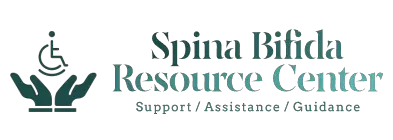3 Spina Bifida Symptoms
The signs and symptoms of spina bifida vary from person to person and also vary with severity of the birth defect. In some cases, there are few or no signs that a child has spina bifida. Later in life, a person who was born with mild spina bifida may experience back stiffness, but this might be mistaken for normal aging or overuse. Sometimes in the case of very mild spina bifida the only way a person finds out they have the condition is through imaging of the spine usually for reasons other than complications from spina bifida.
Severe Forms
More severe forms of spina bifida will appear externally as a strange birthmark, hairy patch, dimple or protrusion on the baby’s back along the spine. Typically these appear in the lower half of the spine (sacral or lumbar area). The most severe forms appear as large cysts protruding out of the baby’s back. Sometimes these protrusions are comprised of just the spinal cord and accessory nerves, as in the most severe cases of spina bifida, myelomeningocele.
Additional Signs
Other signs that a baby may be suffering from spina bifida are bladder and bowel problems (ether incontinence or constipation); paralysis of the lower extremities or loss of feeling/numbness in the lower extremities. Often these signs accompany the cyst-like structures seen in the more severe forms of spina bifida, although even the mild form can cause numbness in the lower extremities.
Boston Children’s Hospital on Bladder and Bowel Control in Spina bifida
Additional Problems
Some problems that appear with spina bifida resemble symptoms of other birth defects. These include heart problems, deformation of bone structures or less than normal intelligence. Because these symptoms are ubiquitous in a group of potential problems a newborn can have, more testing is necessary in babies that have these symptoms to better discern the primary condition of the patient.
Dr. Gupta, Chief Pediatric of Neurosurgery talks about Primary and Secondary Problems of Spina Bifida
One symptom that is seen in almost all spina bifida patients is hydrocephalus. This is a condition caused by a disruption of flow of the spinal fluid from the ventricular area of the brain to the spinal cord. The disruption of flow causes an increase in the pressure and amount of fluid in the head and often results in the baby’s head and brain swelling. In these cases it is important to shunt the fluid to other parts of the body. The patient is at lifelong risk for hydrocephalus.
Other medical problems may appear as well, such as stiffness of the lower and upper extremities, difficulty reading or paying attention and various other injuries related to spinal cord and brain damage.
Dr. Benjamin Warf, Neurosurgeon at Boston Children’s Hospital explains the condition hydrocephalus and their innovative approach to treating the condition.
[ois skin=”1″]
Related Articles:


